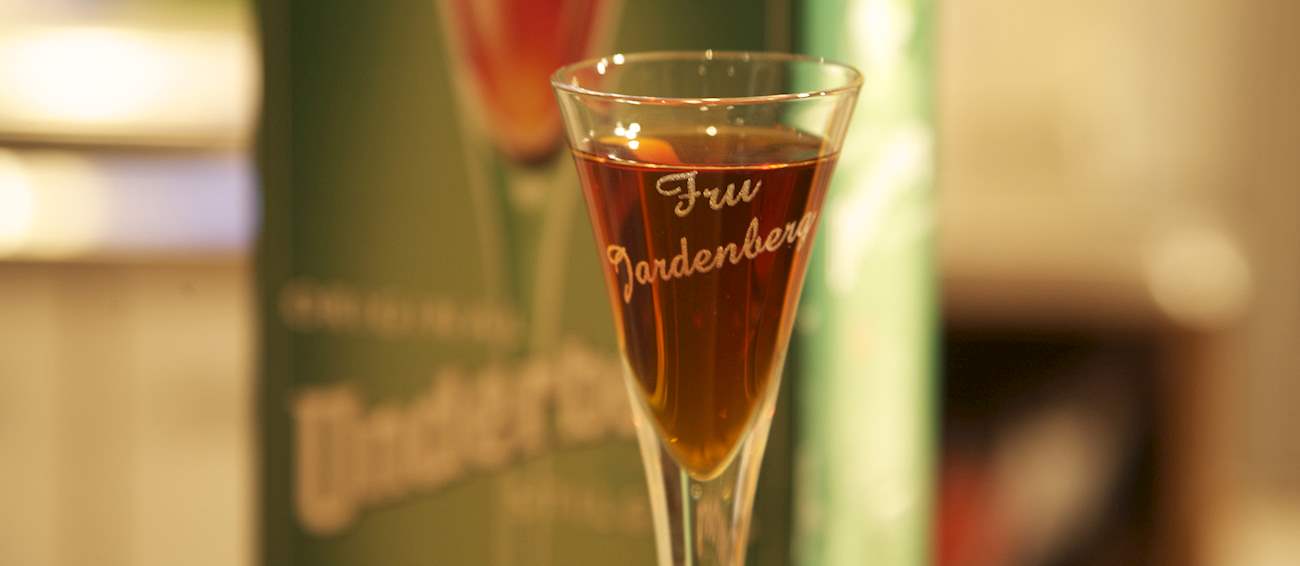Berliner Luft is a popular peppermint liqueur that originates from Berlin, Germany. This clear schnapps is characterized by a refreshing and sharp peppermint flavor, which often leaves a cool feeling in the mouth.
Berliner Luft has grown in popularity both in and outside of Germany, and it's often consumed as a shot after meals or as part of various cocktails. The peppermint flavor makes it an ideal digestif, as it can feel quite refreshing after a hearty meal.
This German herbal liqueur is produced with the aromatic extraction of 43 herbs that results in an amber-colored, herbal drink, with notes of spices and licorice. The base is then aged in oak casks before it is adjusted with fresh spring water to reach the 44% ABV. Underberg is still produced following the original recipe, which dates back to 1851 and is only known by the members of Underberg family.
The drink is traditionally enjoyed as a digestif, typically served in the signature tall glasses. It is sold in copyrighted 20ml bottles that are wrapped in straw paper.
Kuemmerling is a type of herb liqueur that is classified as a kräuterlikör. It was created by Hugo Kümmerling in 1938, and since 1963 the drink has been produced in Bodenheim. Although the exact recipe is kept secret, Kuemmerling is created with a large selection of herbs and spices such as cloves, cinnamon bark, licorice, wormwood, mint, calamus, and angelica root.
It is an amber-colored drink that is characterized by herbaceous and bittersweet flavors. The drink is bottled at 35% ABV, and it is usually sold in the 20ml miniature spirit bottles. Kuemmerling is best served well chilled, preferably in a shot glass, and it is mostly enjoyed as a digestif, although it can also be incorporated into cocktails and long drinks.
This cream liqueur is prepared with a blend of premium vodka, quality Dutch cream, and best selection of Belgian toffee. It was launched in 2000, and it is produced by the family company BEHN in Eckernförde. Dooley’s is bottled at 17% ABV, and though it is best enjoyed neat over ice, it also incorporates well into a variety of cream-based cocktails.
Apart from the original toffee variety, Dooley’s comes in licorice, egg cream, and white chocolate flavor.
Killepitsch is a German herbal liqueur (kräuterlikör) that is made with 98 different herbs and spices. The drink has been produced since 1858 by the Busch family from Düsseldorf, and the original recipe is still kept secret.
Killepitsch is a rich and smooth dark red liqueur that is characterized by bittersweet flavor and aromas of dried fruit and warming spices. It is best served well chilled, and it is mostly enjoyed as a digestif. Killepitsch is bottled at 42% ABV.
XUXU is a German strawberry liqueur that is made with a combination of fresh strawberry mash, vodka, and a splash of lime to balance out the sweetness. The fruit content in the liqueur reaches the impressive 66%, and no additional sugars, apart from the natural fruit sugar, is added to the blend.
Because of its composition, XUXU displays fresh and fruity strawberry aromas and flavors. This sweet liqueur can be enjoyed as a shot, but it also perfectly blends into cocktails and long drinks. It is also commonly used in dessert-making, and it blends exceptionally well into custards and ice creams.
The term kräuterlikör denotes different types of European herb liqueurs, predominantly German, which are also known as halbbitter (half bitters). They appeared soon after the introduction of distillation and were primarily invented as medical remedies.
The most notable kräuterlikör brands include Jägermeister, Underberg, Becherovka, Unicum, Riga Black Balsam, Killepitsch, Kuemmerling, and Aromatique. Although all varieties can be incorporated into cocktails and long drinks, they are traditionally enjoyed well-chilled and neat, preferably as a digestif.
VARIATIONS OF Kräuterlikör
This popular German herbal liqueur was developed in 1934 by Curt Mast. He created the base of the drink with 56 different herbs, roots, and fruits that are macerated in a combination of alcohol and water. The procedure is repeated several times, and the drink is left to age in oak casks before it is combined with alcohol, caramel, sugar, and water to achieve a drinking strength of 35% vol.
Since Mast was a hunter, he drew the inspiration for the now classic Jägermeister logo—a stag with a glowing cross between its antlers—from the tale of St. Hubertus, the patron saint of hunters. Nowadays, Jägermeister is a renowned international drink that should always be served ice-cold and is predominantly enjoyed as a shot, but it can also blend well in cocktails.
TasteAtlas food rankings are based on the ratings of the TasteAtlas audience, with a series of mechanisms that recognize real users and that ignore bot, nationalist or local patriotic ratings, and give additional value to the ratings of users that the system recognizes as knowledgeable. TasteAtlas Rankings should not be seen as the final global conclusion about food. Their purpose is to promote excellent local foods, instill pride in traditional dishes, and arouse curiosity about dishes you haven’t tried.


